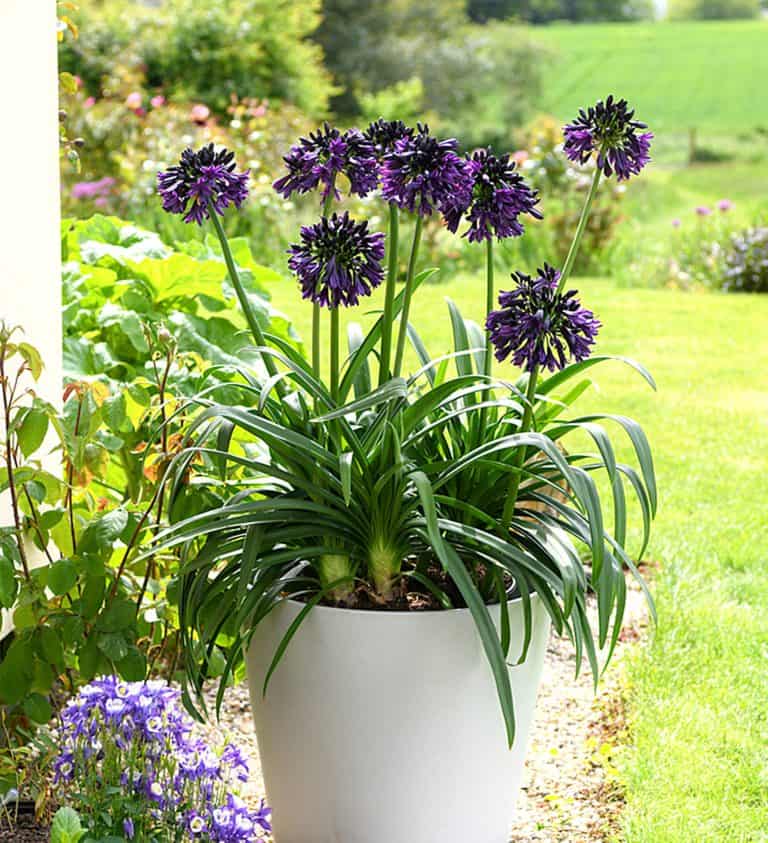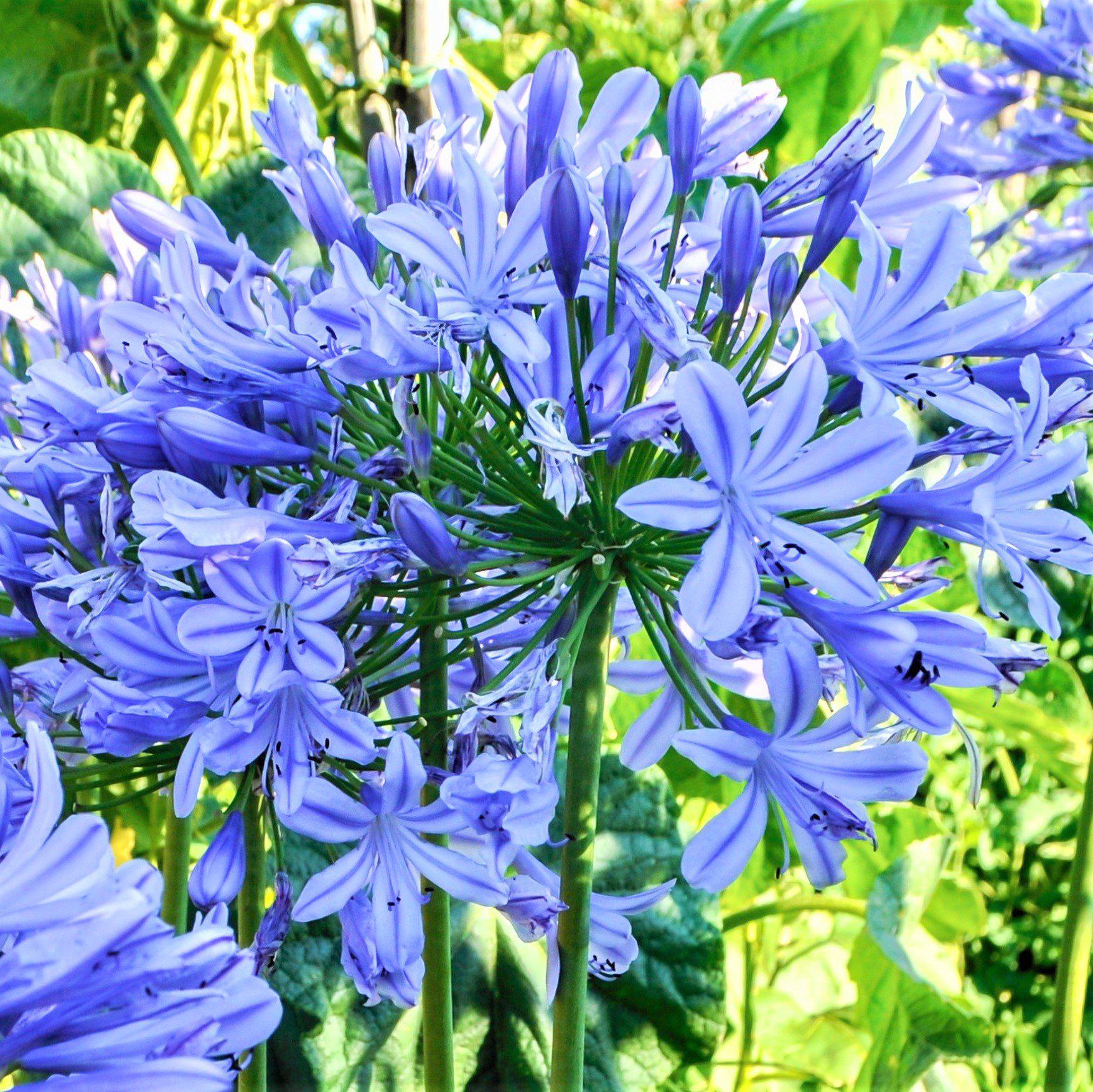Agapanthus Propagation: Tips for Expanding Your Plant Collection
Agapanthus Propagation: Tips for Expanding Your Plant Collection
Blog Article
Unleashing the Secret to Successful Agapanthus Growing: Tips and Tricks for a Flourishing Garden
In the world of gardening, growing agapanthus efficiently needs a tactical strategy that encompasses numerous facets of plant treatment. By understanding the subtleties of agapanthus growing, one can produce an environment where these plants thrive and flower abundantly.
Growing Agapanthus: Finest Practices
When planting Agapanthus, appropriate soil prep work is necessary for guaranteeing successful development and development of these beautiful flowers. Agapanthus, commonly understood as Lily of the Nile or African lily, thrives in well-draining dirt with a slightly acidic to neutral pH degree - Agapanthus. Before growing, it is critical to amend heavy clay dirts with raw material such as garden compost or peat moss to boost drain and supply essential nutrients for the plants
To plant Agapanthus, pick a location that obtains complete sunshine to partial color, as this will promote healthy development and plentiful blooming. Dig an opening twice the diameter of the plant's origin round and put the Agapanthus at the same depth it was previously expanding. Delicately backfill the opening with soil, weighing down securely to eliminate any kind of air pockets around the origins.
Water the freshly planted Agapanthus completely and proceed to maintain the dirt evenly wet, specifically during the plant's active growing season. Agapanthus. Using a balanced fertilizer once a month can better support the plant's growth and flowering. By complying with these finest methods for planting Agapanthus, you can produce a magnificent display of these fascinating flowers in your garden
Ideal Soil Issues for Agapanthus
For optimum development and growing success of Agapanthus plants, ensuring the soil problems are excellent is vital. Agapanthus grows in well-draining dirt with a somewhat acidic to neutral pH degree varying from 6.0 to 7.0. This kind of soil enables ample water drain, stopping waterlogging which can result in root rot. To boost dirt water drainage, take into consideration including raw material such as garden compost or peat moss when preparing the growing site. Moreover, Agapanthus favors dirt that is abundant in nutrients, so integrating a balanced fertilizer throughout the expanding period can advertise healthy growth and vibrant blossoms.

Watering and Fertilizing Tips
To make sure healthy and balanced development and lively blossoms, appropriate watering and fertilizing methods are vital for effective Agapanthus growing. Agapanthus plants benefit from routine watering, especially throughout the expanding period. It is suggested navigate to this site to water deeply when a week, guaranteeing the soil is moist yet not saturated. Throughout hot climate or in pots, even more regular watering may be needed to stop the dirt from drying out completely.
When it pertains to fertilizing Agapanthus, a balanced plant food with equal components nitrogen, phosphorus, and potassium can be applied in the springtime to advertise healthy development and flowering. Slow-release plant foods are suitable for supplying nutrients progressively over an extensive period. Prevent over-fertilizing, as this can bring about top article excessive vegetation development at the expenditure of blossoms.
In addition, incorporating organic matter like compost into the soil can improve nutrient degrees and boost dirt framework, assisting in the general health of the Agapanthus plants. By following these watering and fertilizing tips, garden enthusiasts can ensure their Agapanthus plants flourish and produce stunning display screens of blossoms.
Trimming and Deadheading Strategies
Correct pruning and deadheading techniques play a vital function in preserving the health and wellness and looks of Agapanthus plants, enhancing the important methods of watering and fertilizing for successful cultivation. Trimming Agapanthus involves removing spent flower heads, dead or yellowing fallen leaves, and overall shaping of the plant to advertise much better growth. Deadheading, the process of removing faded flowers, not just enhances the plant's look but also urges further flowering.
When deadheading Agapanthus, it is a good idea to trim off the blossom stem at the base utilizing sharp, clean shears. This procedure reroutes the plant's power from seed manufacturing back right into root and vegetation development, advertising a healthier and more robust plant. Routine deadheading can extend the flowering duration of Agapanthus and protect against self-seeding, which can lead to overcrowding.
In regards to pruning, Agapanthus typically take advantage of a light trim after blooming to clean up the plant and motivate fresh development. Cutting back the spent blossom stems and getting rid of any type of damaged or dead foliage helps keep the plant's vigor and overall appearance. Nevertheless, it is vital to prevent cutting into the crown of the plant, as this can compromise its wellness.

Protecting Agapanthus From Vermins and Diseases
Implementing efficient bug and condition administration methods is crucial to securing the health and wellness and vitality of Agapanthus plants in cultivation. One common pest that influences Agapanthus is the Agapanthus borer, a caterpillar that tunnels into the plant, triggering damage to the leaves and blossoms.
Along with insects, Agapanthus are at risk to conditions such as origin rot and fungal leaf places. These problems can often be prevented by making certain appropriate water drainage and avoiding overwatering. If signs of illness show up, impacted parts of the plant should be check it out quickly gotten rid of to avoid more spread. Fungicides may additionally be made use of as a therapy measure, adhering to the supplier's guidelines thoroughly. By staying cautious and resolving parasite and condition problems quickly, gardeners can aid their Agapanthus prosper and prosper.

Conclusion
In conclusion, effective growing of agapanthus requires proper planting strategies, perfect dirt problems, ample watering and feeding, routine trimming and deadheading, and defense from conditions and pests. By following these ideas and methods, garden enthusiasts can guarantee a prospering garden loaded with lovely agapanthus blossoms. Agapanthus. Remember to maintain constant care and focus to information to advertise the health and wellness and longevity of these sensational plants
When growing Agapanthus, proper dirt preparation is essential for guaranteeing effective development and advancement of these lovely flowers.Water the freshly planted Agapanthus thoroughly and proceed to maintain the soil evenly moist, specifically throughout the plant's active growing period.For ideal growth and blooming success of Agapanthus plants, making certain the dirt conditions are ideal is essential. When transplanting or growing Agapanthus, make sure the dirt is well-prepared to offer the necessary structure for the plants to develop themselves effectively. One usual parasite that impacts Agapanthus is the Agapanthus borer, a caterpillar that passages right into the plant, triggering damage to the leaves and flowers.
Report this page